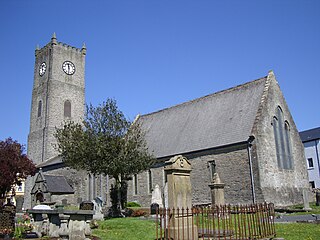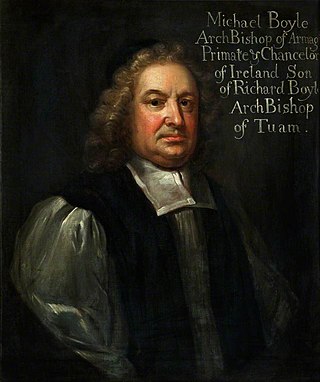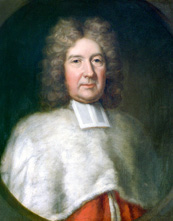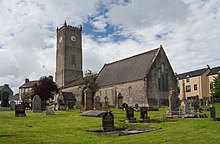Charles Crow was Bishop of Cloyne from 1702 until his death on 26 June 1726.

The Bishop of Raphoe is an episcopal title which takes its name after the town of Raphoe in County Donegal, Ireland. In the Roman Catholic Church it remains a separate title, but in the Church of Ireland it has been united with another bishopric.

Michael Boyle, the younger was a Church of Ireland bishop who served as Archbishop of Dublin from 1663 to 1679 and Archbishop of Armagh from 1679 to his death. He also served as Lord Chancellor of Ireland, the last time a bishop was appointed to that office.

Sir William Robinson PC(I) was a British architect, military engineer and politician. He held several posts in the Dublin Castle administration, including as Surveyor General of Ireland from 1671 until 1700. He was an influential figure in the development of classical architecture in Ireland, designing many buildings in the English Baroque-style, particularly in Dublin.
The Dean of Ossory or Dean of Kilkenny is based at The Cathedral Church of St Canice, Kilkenny in the united Diocese of Cashel and Ossory within the Church of Ireland.

John Sterne (1660–1745) was an Irish Church of Ireland clergyman, bishop of Dromore from 1713 and then bishop of Clogher from 1717.
Philip Twysden (1713–1752), was an Anglican clergyman who served in the Church of Ireland as Lord Bishop of Raphoe from 1747 to 1752. The circumstances of his death later became the subject of scandalous rumour.

'Michael Ward (1643-1681) was a 17th-century Anglican bishop and academic in Ireland.
Anthony Martin was an Anglican priest in Ireland during the first half of the 17th-century.
Dr. Patrick Sheridan was the Church of Ireland Bishop of Cloyne between 1679 and 1682.
John Smith was an Irish Anglican priest in Ireland in the seventeenth century.
William Smyth was a seventeenth century Anglican bishop in Ireland. He was the ancestor of the prominent landowning family of Barbavilla Manor, Collinstown, County Westmeath.
James Verschoyle, LL.D. (1747–1834) was an Irish Anglican bishop.
Francis Corbet, D.D. was an Irish Anglican Dean.
Charles Knox was Archdeacon of Armagh from 1814 until his death.
Thomas Paul was an Irish Anglican priest in the second half of the 18th century.
William Digby was a Church of Ireland priest in Ireland.
William Boyde (1697–1765) was an Anglican priest in Ireland during the 18th century, most notably Archdeacon of Kildare from 1737 until his death.
William Williamson (1697–1765) was an Anglican priest in Ireland during the 18th century, most notably Archdeacon of Kildare from 1737 until his death.
Henry Scardeville (1654–1703) was an Anglican priest in Ireland in the second half of the 17th century and the very start of the eighteenth.





